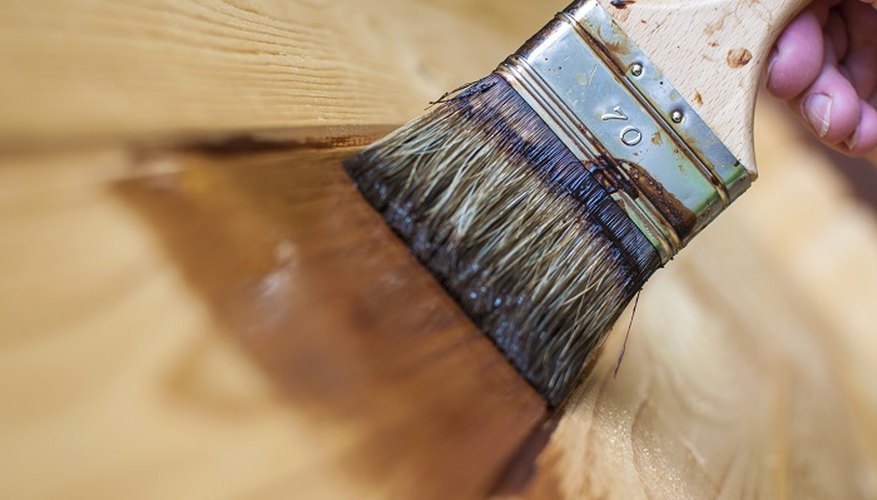Also known as parawood, rubberwood is derived from the Pará rubber tree. The sap from the rubberwood tree is a component in the manufacturing of latex -- once the sap is depleted, the wood from the tree is often used to make furniture. Rubberwood has a tendency to warp, but you can combat this problem and enhance the appearance of the wood by finishing it with paint. Unfortunately, rubberwood is not well-suited for adhesion and will reject painted finishes unless you properly condition it first. Choose the proper primer based on the location and condition of the rubberwood, then apply each coating in a specific manner to prevent the finish from drying with unsightly flaws.
- Also known as parawood, rubberwood is derived from the Pará rubber tree.
- Rubberwood has a tendency to warp, but you can combat this problem and enhance the appearance of the wood by finishing it with paint.
Wipe down the rubberwood with sticky tack cloths.
Cover the portions of the rubberwood that you don't want to paint, using masking tape and paper.
Coat the rubberwood with primer, using a roller. Use a latex primer on interior rubber wood. Use an acrylic latex primer on exterior rubberwood. Apply primer to a single 90 by 90 cm (3 by 3 feet) area at a time. Promote a slick finish by smoothing the wet primer with a polyester paintbrush -- brush vertically, applying very gentle pressure. Continue until you've primed all of the rubberwood and allow two hours of drying time.
- Coat the rubberwood with primer, using a roller.
- Use a latex primer on interior rubber wood.
Wash the polyester brush and roller with tap water.
Paint the rubberwood just as you primed it. Use latex paint for ordinary rubberwood surfaces. Use acrylic enamel on rubberwood subject to duress. Allow two hours of drying time.
TIP
Use the brush to prime and paint portions of the rubberwood that are inaccessible to the roller.
Use oil-based primer on stained rubberwood. Choose an oil-based primer specifically made for use with latex and acrylic topcoats.
WARNING
Never attempt to paint unprimed rubberwood -- it will reject the new finish.
Don't use latex paint on rubberwood furniture, as it will not remain durable.
Don't use a nylon paintbrush to smooth the wet primer and paint, as it will leave brushstrokes in the finish.
